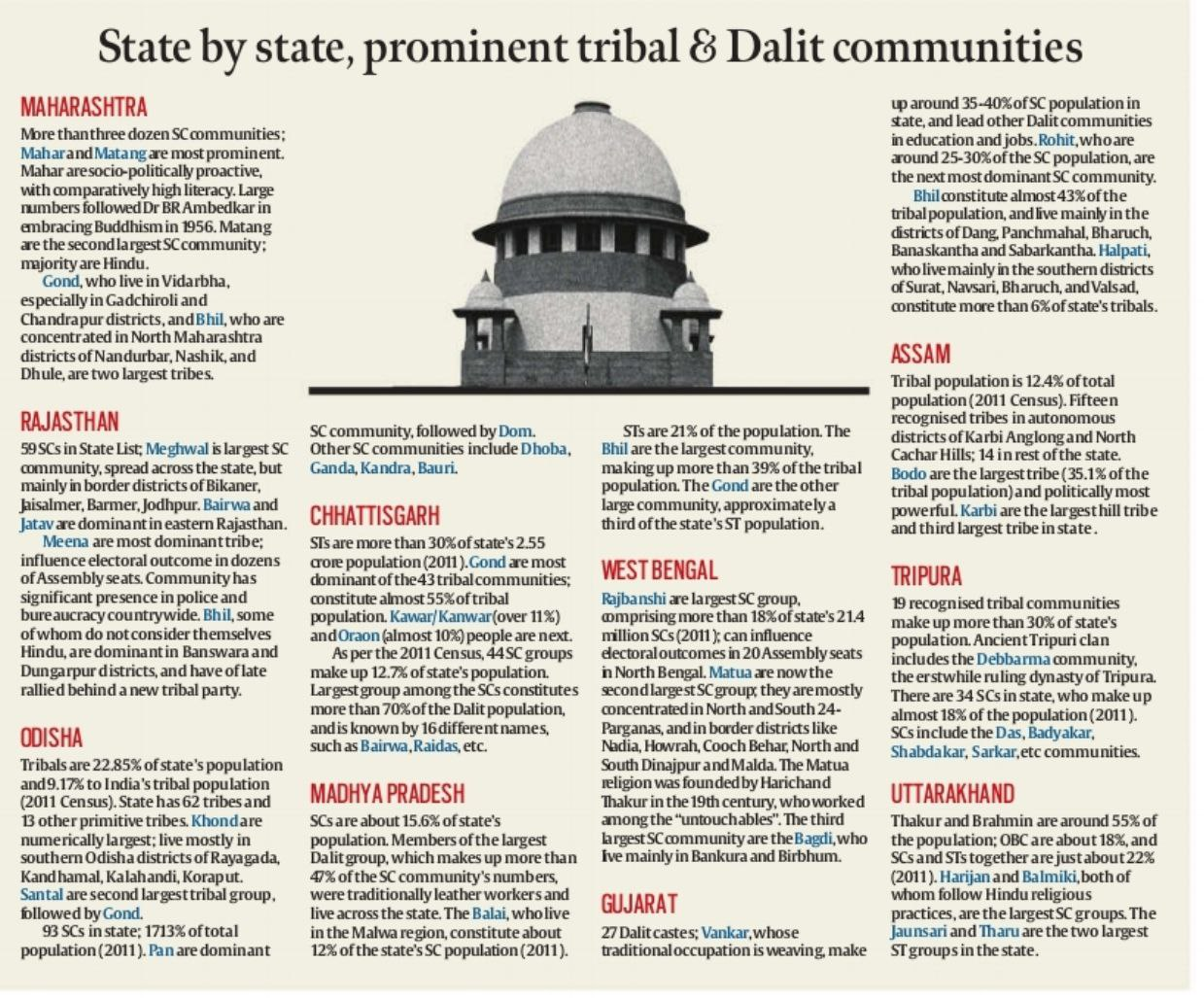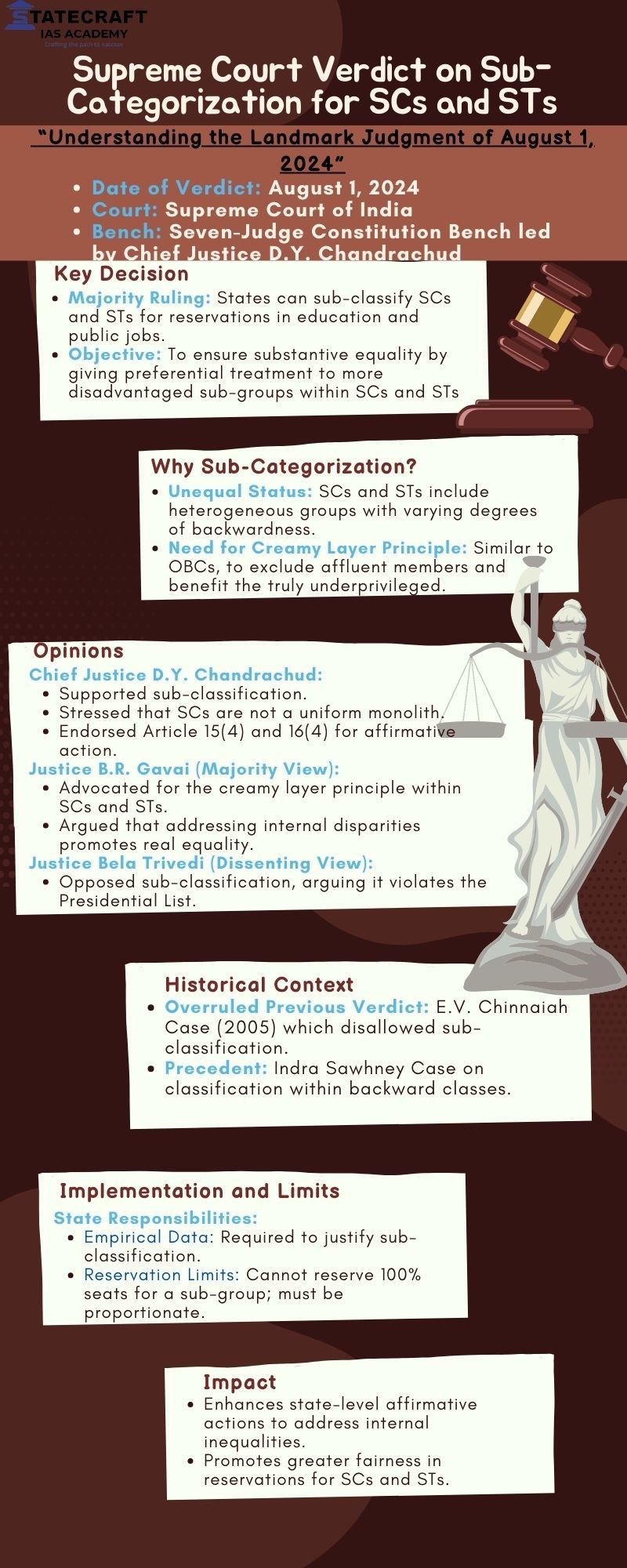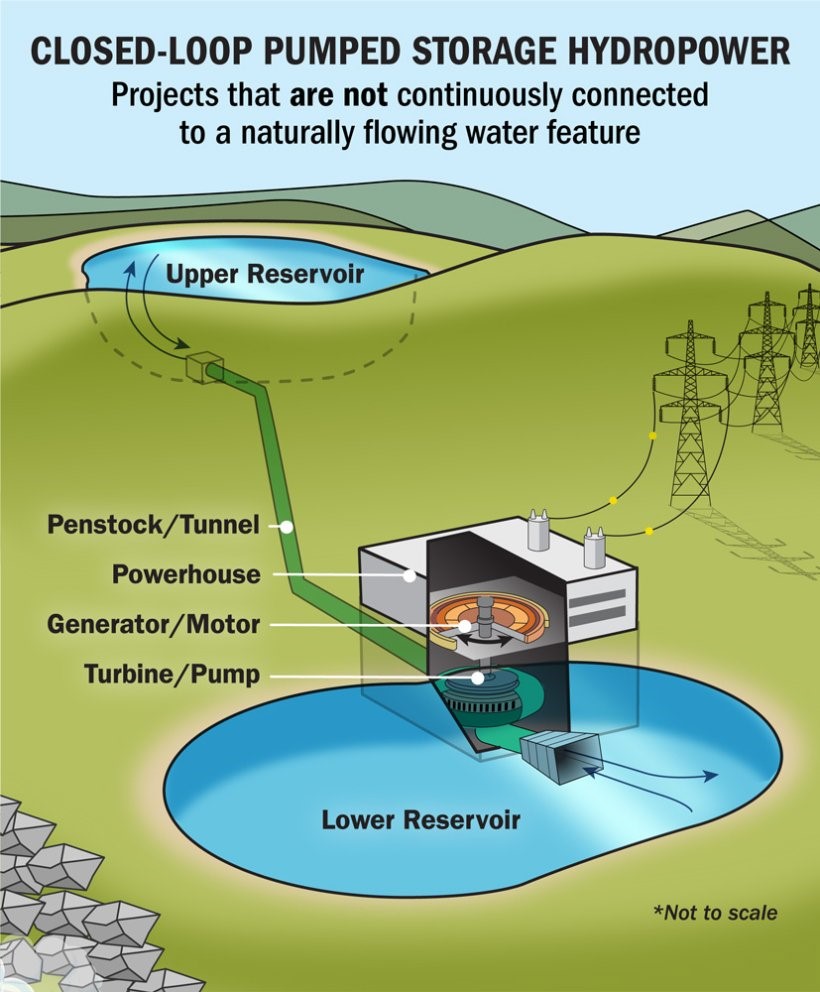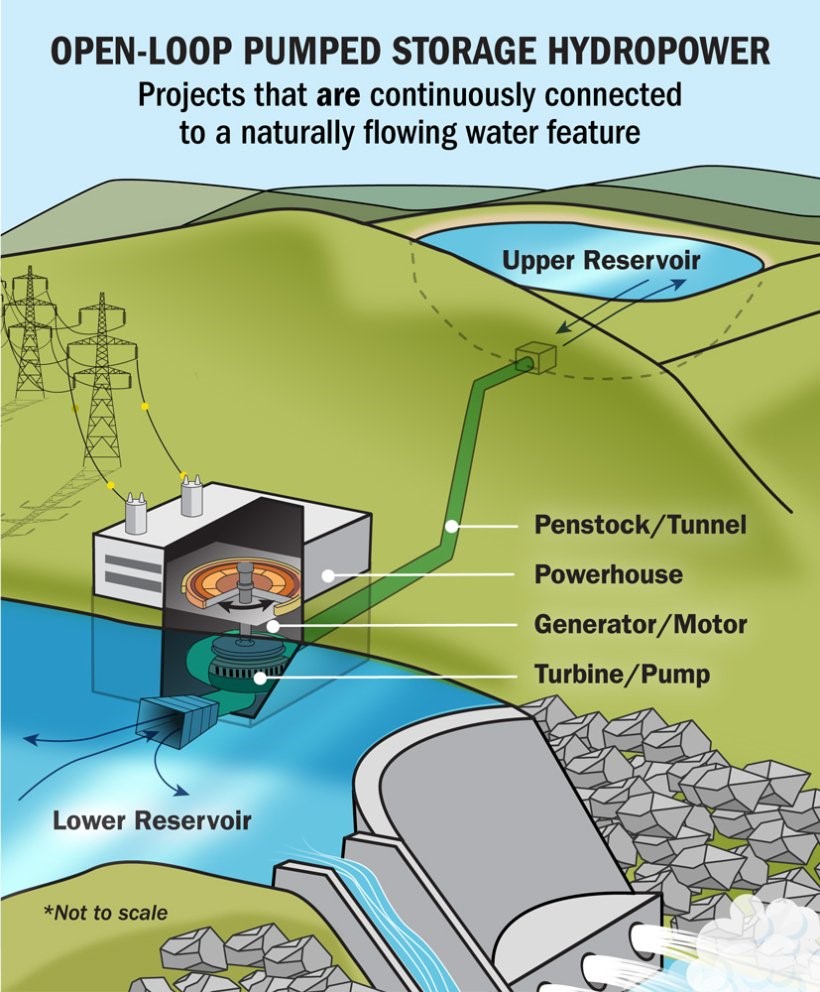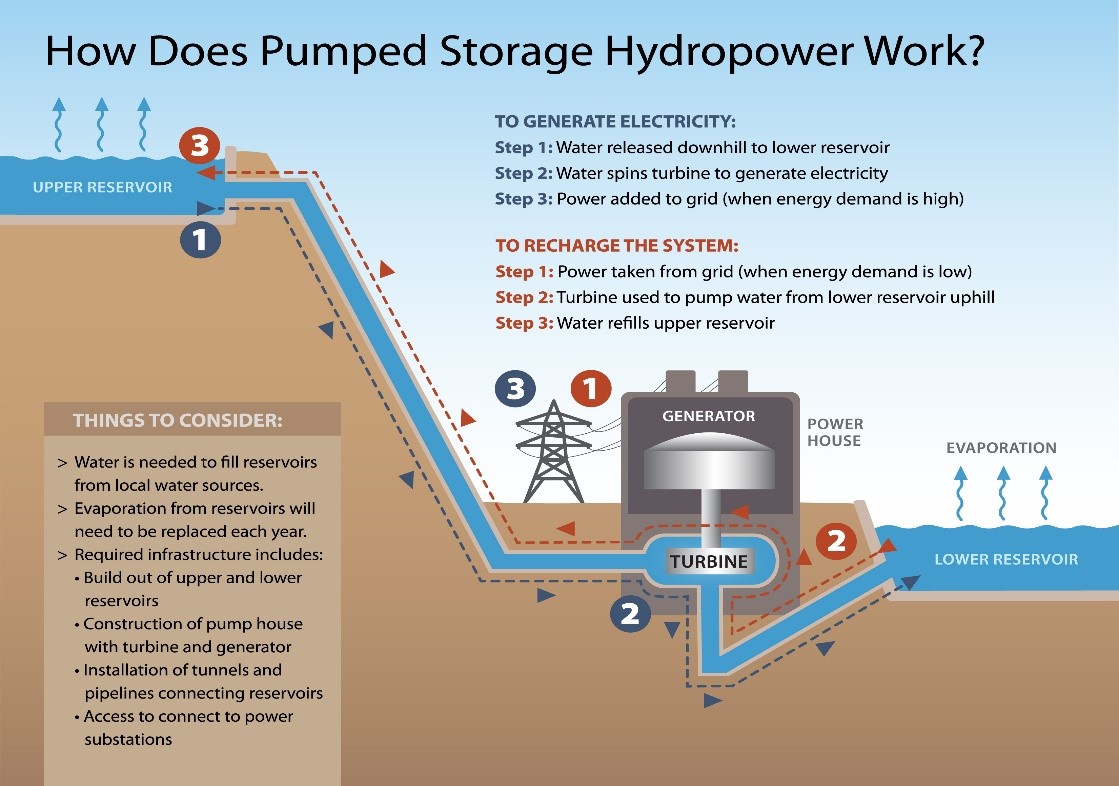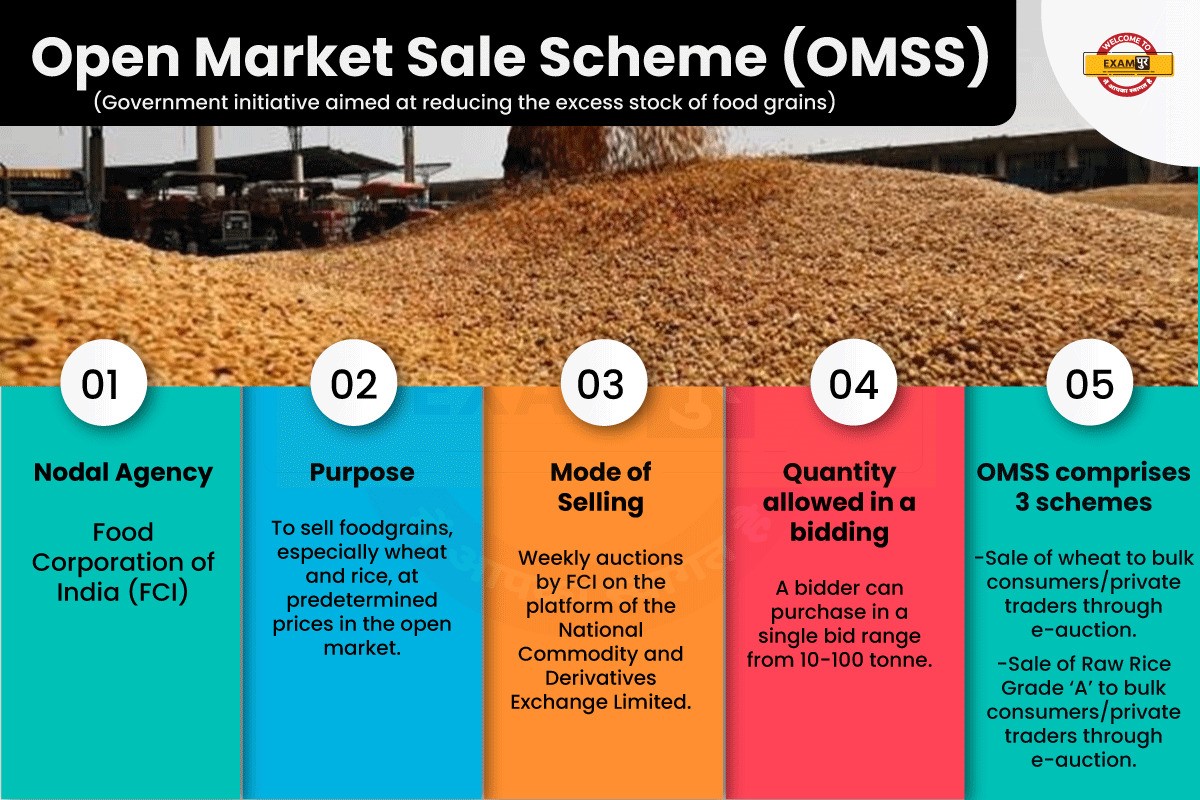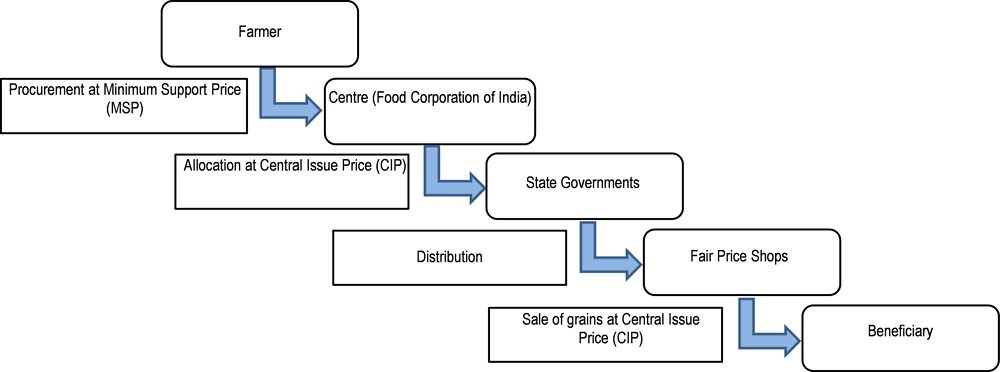1. Sub-classification of Scheduled Castes and Scheduled Tribes
CONTEXT: Supreme Court’s Landmark Judgement on SC and ST reservation
On August 1, 2024, a seven-judge bench of the Supreme Court overturned a previous decision and permitted states to create sub-classifications within the Scheduled Castes (SC) and Scheduled Tribes (ST) categories. This judgement has significant implications for affirmative action policies in India.
Key Points
- Overturning Past Precedent: The judgement reverses the 2004 decision in V. Chinnaiah v State of Andhra Pradesh, which held that the SC/ST list is a homogeneous group and cannot be further divided.
- Reasons for Sub-classification: The court acknowledged that there are unequal levels of backwardness within the SC and ST categories. Sub-classification allows states to provide wider protections and reservations to the most disadvantaged communities within these groups.
- Examples: The judgement highlights the case of Punjab, where the Balmiki and Mazhabi Sikh communities are more backward than others. Similarly, in Maharashtra, the Gond and Bhil tribes have different levels of socio-economic development.
- State Powers and Limitations: States have the power to create sub-classifications under Articles 15(4) and 16(4) of the Constitution. However, they must demonstrate a need for sub-classification with empirical data and ensure ‘reasonable’ rationale.
- Creamy Layer amongst SC/ST: The court judgement did not definitively address the creamy layer concept for SC/ST. However, Justice Gavai opined that a similar concept might be applied with different criteria compared to OBCs.
Data and Examples
- The judgement uses the examples of Punjab, Maharashtra, and other states to illustrate the existence of unequally backward communities within SC/ST.
- The concept of creamy layer among OBCs is used as a reference point for potentially applying a similar concept to SC/ST with different criteria.
Further Considerations
- The criteria for sub-classification and creamy layer (if implemented for SC/ST) need to be clearly defined by states.
- The potential impact on social harmony and inter-community dynamics within SC/ST needs to be considered.
- Long-term effectiveness of sub-classification in achieving social justice goals requires monitoring and evaluation.
2. GM Crops in India
CONTEXT: India is at a crossroads regarding the adoption of Genetically Modified (GM) crops. While GM crops offer potential benefits in terms of increased yield, pest resistance, and drought tolerance, there are also concerns about environmental impact, food safety, and farmer dependency on seed monopolies.
Current Scenario:
| · Only GM cotton (Bt cotton) is commercially cultivated in India. · Other GM crops like rice, wheat, tomato, brinjal, and mustard are under development. · DMH-11 mustard is a key case study. It was developed by Delhi University and approved by GEAC (Genetic Engineering Appraisal Committee) but faces legal challenges. |
Benefits of GM Crops:
| · Increased yield: Bt cotton has shown significant yield increases. · Pest resistance: Reduces pesticide use and associated health risks. · Drought tolerance: Can help address water scarcity issues. · Improved nutritional value: Potential to develop nutrient-rich crops.
|
Concerns and Challenges:
| 1. Environmental impact: Concerns about herbicide-tolerant crops leading to increased herbicide use and potential harm to biodiversity. 2. Food safety: Long-term effects on human health are unknown. 3. Farmer dependency: Dependence on seed monopolies and high costs. 4. Public perception: Negative perception due to lack of awareness and misinformation.
|
Case of DMH-11 Mustard:
- Developed under a public-funded project at Delhi University.
- Passed rigorous trials by ICAR.
- Approved by GEAC with certain conditions.
- Faces legal challenges based on precautionary principle and lack of transparency.
Policy and Regulatory Framework:
- Need for a clear and science-based policy on GM crops.
- Strengthening of regulatory bodies like GEAC.
- In Public awareness and consultation.
Data and Examples
- Bt cotton adoption has led to increased cotton production in India.
- The case of DMH-11 highlights the conflicting views on GM crops.
- Public opinion surveys can be used to assess public perception.
3. The case for Pumped storage
CONTEXT: India aims for 500GW non-fossil fuel energy by 2030, with 23GW already achieved (2021-2023).
- Renewable sources like wind and solar are increasing rapidly but are variable and intermittent.
- Pumped storage projects store excess renewable energy for later use, ensuring steady power supply.
- India has 3.3GW pumped storage (Nagarjunasagar, Kadana, Kadamparai, Panchet, Bhira), needing significant expansion.
Pumped storage types:
- On-river: Uses river water.
- Off-river: Two reservoirs at different levels, water pumped up/down.
Kadamparai (Tamil Nadu) example:
- 4 units, each 100MW.
- Higher reservoir (380m) above lower reservoir.
- Turbines generate power when water flows down.
- Pumps store energy by pumping water up using surplus solar power.
- Can switch between pump and generator modes.
- Supports evening peak loads with 400MW for 3-4 hours.
Challenges:
- Requires significant investment and suitable geography.
Environmental impact needs careful assessment.
4. Food Security and Procurement
Direct Purchase of Rice by States:
Policy Update: States can now directly purchase rice from the Food Corporation of India (FCI) under the Open Market Sale Scheme (Domestic) without participating in e-auction.
Objective: To manage and reduce the surplus stocks of rice before the procurement season of kharif crops.
Pricing: States can procure rice at ₹2,800 per quintal (excluding transportation costs), reduced from the earlier rate of ₹2,900 per quintal.
Pradhan Mantri Garib Kalyan Anna Yojana (PMGKAY):
- Beneficiaries: The scheme aims to provide free foodgrains to around 81.35 crore beneficiaries.
- Duration and Budget: The scheme will continue for five years starting from January 1, 2024, with a financial outlay of ₹11.8 lakh crore.
- Current Status: Custom-milled rice is being replaced with fortified rice in government schemes.
Fortified Rice Initiative:
- Completion: The replacement of custom-milled rice with fortified rice across government schemes has been successfully completed.
Price Monitoring and Stabilization
- Current Situation: Vegetable prices, particularly tomatoes, have been stabilizing.
- Subsidized Pricing: The Centre has made subsidized tomatoes available at ₹60 per kg.
Price Monitoring System (PMS) App:
- Version Update: The latest version (4.0) of the PMS mobile app has been launched.
- Coverage Expansion: The app now monitors prices of 38 commodities, up from 22. New items include:
- Grains and Pulses: Bajra (whole), Jowar (whole), Ragi (whole)
- Flours: Suji (wheat), Maida (wheat)
- Other Essentials: Besan, Ghee, Butter (pasteurized)
- Vegetables and Spices: Brinjal, Black Pepper, Coriander, Cumin Seed, Red Chillies, Turmeric Powder, Banana
- Protein: Egg
Governance Insights
- Policy Effectiveness: Direct procurement aims to streamline operations and address surplus management, showing a responsive governance approach to market conditions.
- Financial Planning: The long-term financial commitment to PMGKAY demonstrates significant investment in food security.
- Technological Integration: The enhancement of the PMS app highlights the use of technology in price monitoring and market transparency.

